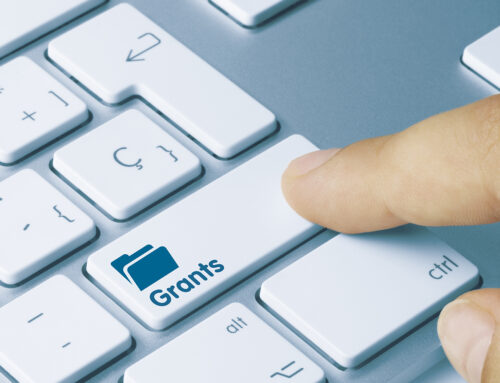
“How do I get grants?”
This is one of the most common questions I get from newbies, startups, and folks who are still underfunded.
I think maybe they’re looking for a silver bullet that will magically make grants appear for them.
Well, it’s definitely not a “build it and they will come” situation.
Just because you have a nonprofit and are doing good work doesn’t mean money will suddenly come flying in. And it certainly doesn’t mean grants will become easy to get.
Grants are competitive. You have to prove that your program or project is better than anyone else’s. You have to show that the Grantor’s money will be well spent with you and they’ll get great results for their investment.
It’s about finding the sweet spot between what you’re trying to do and what a foundation wants to fund.
I remember when I first started writing grants. I loved the idea that I could put together a proposal and get thousands of dollars for my nonprofit. It would be easy and I was a good writer, so success should come easily.
Except that it didn’t. It was a little harder than I thought it would be.
The first proposal I put together was what I now call a “kitchen sink” proposal. I put everything in it. I asked for operating support and money for a vehicle and money to hire a staff person.
You won’t be surprised when I tell you it wasn’t funded.
But I didn’t give up
I spent the next 6 months or so learning everything I could about grants. I attended a couple of workshops, read a book, and quizzed other fundraisers about how they were getting grants. I looked at samples. I wrote and rewrote and rewrote paragraphs describing my programs.

Woohoo! I was hooked. I wanted to do it again.
After that, I kept learning and kept writing. My success rate skyrocketed to about 70% (I was getting about 7 out of every 10 grants I applied for).
How did I go from zero to hero?
Keys to getting grants for beginners
1. Keep learning. I never stopped learning about how good grants were put together. I learned about how foundations make their decisions. I listened to what experts said to do or not do. I soaked up everything I could to make me a better grant writer. You have access to dozens of blog articles, webinars, podcasts, and videos on the internet plus workshops in your local area. Tale advantage of all of it to keep learning.
2. Keep trying. I didn’t quit when that first grant was turned down. And I could have. I could have said “that doesn’t work” and walked away from grant writing. But I kept at it until I got good at it. As a result, I started getting thousands in grant dollars. Grant writing isn’t easy and you need to commit to it long-term. Hang in there when it seems hard because that’s when you’ll see results.
3. Define what needs funding. I spent some time looking at my organization in different ways looking for things foundations would fund. I could ask for operating money and I could ask for money for equipment or staff. Or I could look for less-obvious things foundations might fund. I created “Fundable Areas” and wrote descriptions of them. It made my life easier when I did research, because I had lots of things to fund instead of just our annual operating budget.
For example, a program providing after-school programs to kids might look for grants for education (if you’re doing tutoring), grants that fight gangs (because if they’re with you, they’re not doing gang stuff), grants for recreation (if you’re doing any kind of sports), and there’s probably a lot more.
4. Include direct and indirect costs. I found out that there aren’t a lot of grants out there to cover salaries and overhead expenses. It occurred to me that some of our programs depended on staff to run them or a facility to house them. So I included in program budgets direct expenses like supplies for the program and indirect expenses like utilities for the building where the program was housed. It took some time and effort to figure out how to allocate the entire utility bill across our programs, but when I was finished, it made sense and I could explain it if anyone asked. The bottom line was that I found a way to get some of the staff salaries covered by including them in program budgets.
Here’s a video where I explain how to include the indirect costs:
5. Get organized. I created a calendar of deadlines so I could keep up with what was coming up. I did a couple of last-minute grants and they were awful. So I decided to get ahead of the curve to prevent that nonsense from happening again. A Deadline Calendar was simple and easy to create, and kept me from being behind the 8-ball.
6. Go for a ‘hand-in-glove’ fit. Don’t put a proposal together and send it to every possible foundation. Find those funding opportunities that are a great fit for your program or project and target those. Tailor your proposal for that foundation’s interests. You’ll actually improve your chances of getting a grant using this technique.
There are tons more tips I could give you, like follow the foundation’s guidelines to the letter. It’s one way they weed proposals out. Or start early so you have plenty of time for collaborations, both internally and externally (I could tell you a WHOLE story about a Program Director I butted heads with to get program data).
Good grants start with research. Find local access to the Foundation Center database and see what funding opportunities you can find. Then write the best proposal you can, being clear and concise. Submit your grant and see what happens. Celebrate when you get one, and learn from it when you don’t.
It’s the best way to get more grants, no matter how big your nonprofit is.






Leave A Comment